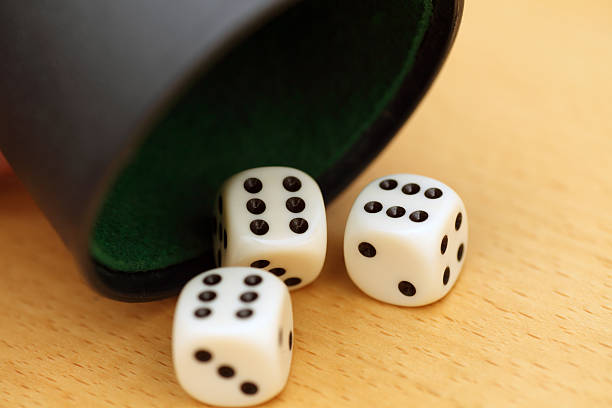Dice Roller
What is Dice?


Dice are thrown onto a surface either from the hand or from a container designed for this (such as a cup or tray). The face of the die that is uppermost when it comes to rest provides the value of the throw.
The result of a die roll is determined by the way it is thrown, according to the laws of classical mechanics. A die roll is made random by uncertainty in minor factors such as tiny movements in the thrower's hand; they are thus a crude form of hardware random number generator.
One typical contemporary dice game is craps, where two dice are thrown simultaneously and wagers are made on the total value of the two dice. Dice are frequently used to introduce randomness into board games, where they are often used to decide the distance through which a piece will move along the board (as in backgammon and Monopoly).
Common dice are small cubes, most often 1.6 cm (0.63 in) across, whose faces are numbered from one to six, usually by patterns of round dots called pips. (While the use of Arabic numerals is occasionally seen, such dice are less common.)
Opposite sides of a modern die traditionally add up to seven, requiring the 1, 2, and 3 faces to share a vertex. The faces of a die may be placed clockwise or counterclockwise about this vertex. If the 1, 2, and 3 faces run counterclockwise, the die is called "right-handed". If those faces run clockwise, the die is called "left-handed". Western dice are normally right-handed, and Chinese dice are normally left-handed.
The pips on standard six-sided dice are arranged in specific patterns as shown. Asian style dice bear similar patterns to Western ones, but the pips are closer to the center of the face; in addition, the pips are differently sized on Asian style dice, and the pips are colored red on the 1 and 4 sides. Red fours may be of Indian origin.
Manufacturing
Non-precision dice are manufactured via the plastic injection molding process. The pips or numbers on the die are a part of the mold. Different pigments can be added to the dice to make them opaque or transparent, or multiple pigments may be added to make the dice speckled or marbled.
The coloring for numbering is achieved by submerging the die entirely in paint, which is allowed to dry. The die is then polished via a tumble finishing process similar to rock polishing. The abrasive agent scrapes off all of the paint except for the indents of the numbering. A finer abrasive is then used to polish the die. This process also creates the smoother, rounded edges on the dice.
Precision casino dice may have a polished or sand finish, making them transparent or translucent respectively. Casino dice have their pips drilled, then filled flush with a paint of the same density as the material used for the dice, such that the center of gravity of the dice is as close to the geometric center as possible. This mitigates concerns that the pips will cause a small bias. All such dice are stamped with a serial number to prevent potential cheaters from substituting a die. Precision backgammon dice are made the same way; they tend to be slightly smaller and have rounded corners and edges, to allow better movement inside the dice cup and stop forceful rolls from damaging the playing surface.
History
Dice have been used since before recorded history, and it is uncertain where they originated. It is theorized that dice developed from the practice of fortune-telling with the talus of hoofed animals, colloquially known as knucklebones. The Egyptian game of senet was played with flat two-sided throwsticks which indicated the number of squares a player could move, and thus functioned as a form of dice. Senet was played before 3000 BC and up to the 2nd century AD. Perhaps the oldest known dice were excavated as part of a backgammon-like game set at the Burnt City, an archeological site in south-eastern Iran, estimated to be from between 2800–2500 BC. Bone dice from Skara Brae have been dated to 3100–2400 BC. Excavations from graves at Mohenjo-daro, an Indus Valley civilization settlement, unearthed terracotta dice dating to 2500–1900 BC.




Comments (1)
Magik Man 🌿
can we get a plugin or something?